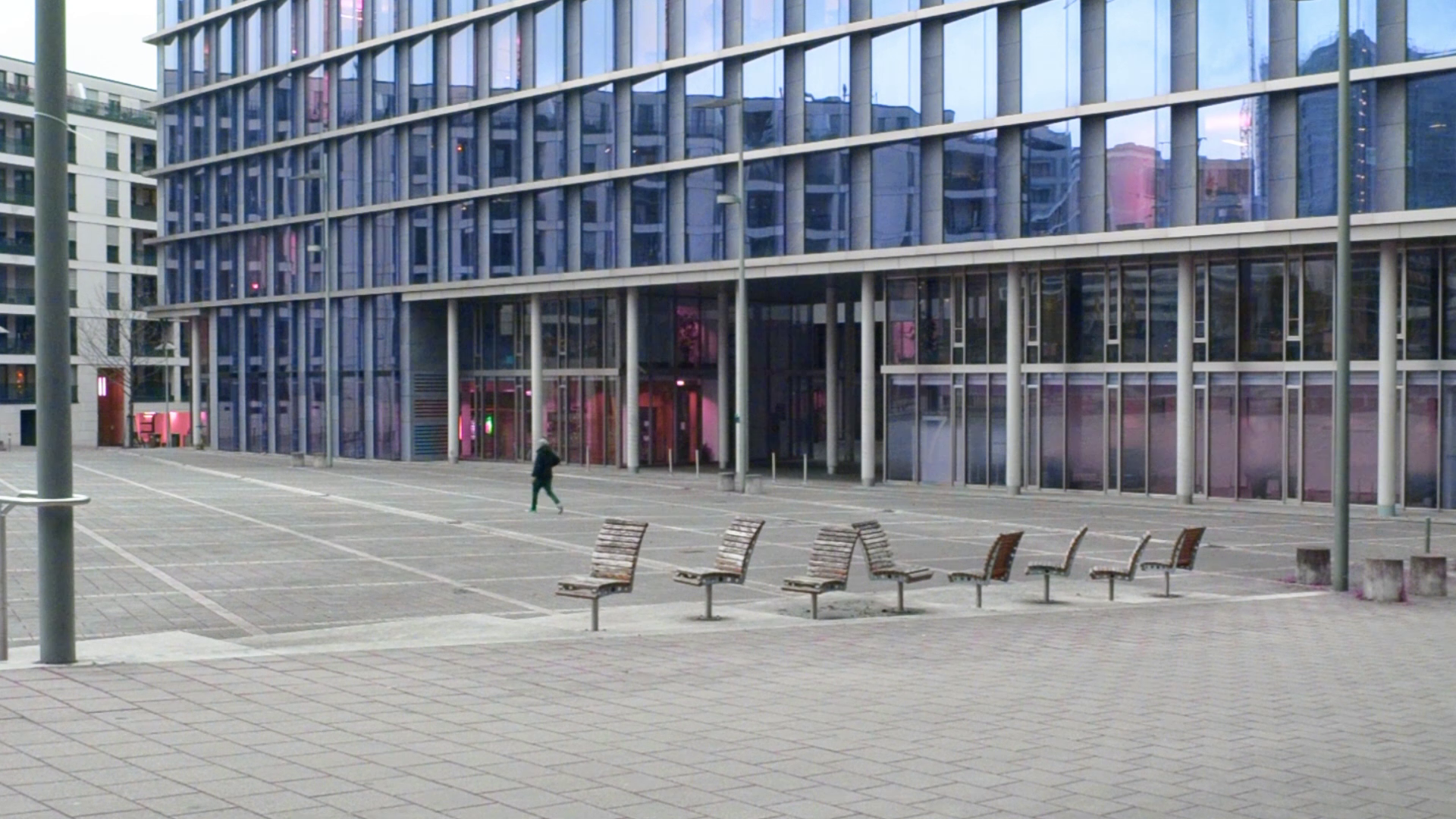

During a period of restrained movement, of silent fear and invisible walls, of temporal barriers and solitude, the city became a place outside. Detached from experience, the urban environment becomes both a memory and a projection, under the hopes for another, future time.
In Stuttgart, where the overwhelming presence of the construction site constantly rearranges urban flows, compromising in urban space
Stuttgart Sub Rosa is the picture of a city locked at home.
Images of Stuttgart recorded with a static camera are narrated by a language that draws on memory rather than direct observation. Anonymous voices emerge to articulate the shared reality of the pandemic, like the pressure to maintain productivity while working from home. These voices highlight the collective experience of anxiety that the pandemic has exacerbated, blending personal and societal tensions. However, as the narrative unfolds, the 'I' who speaks in a time after the events of the Film.
draws on Ottomar Domnick’s Jonas (1957), set in post-war Stuttgart, where the protagonist grapples with anxiety and guilt from his wartime past. The hat, which Jonas buys in an attempt to redefine his social identity, symbolizes his burdened past. This symbol is repurposed in the contemporary pandemic setting.




Graduation project / 2021 / IGmA / Universität Stuttgart / Prof. Dr.-Phil. Stephan Trüby / Supervised by: Sandra Oehy, Philipp Krüpe, Leonard Herrmann